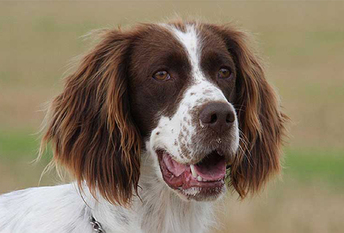Little is known about the Welsh Springer’s origins, but he’s considered a very old breed, with ancestors dating to Roman Britain. Tapestries from the Renaissance depict spaniels that closely resemble today’s Welsh Springer; similar red-and-white spaniels appear in a few 18th-century portraits. By the 19th century, the dogs were little known, except in the Neath Valley region of southern Wales.
The preponderance of dog shows in the late 19th century brought about renewed interest in the breed, which made an appearance at the first Kennel Club show, held in 1873. They were judged alongside black-and-white spaniels and white English Springer Spaniels. Eventually, the two breeds were separated.
The American Kennel Club recognized the Welsh Springer in 1906, but few people were interested in the breed. By the end of World War II, they were practically non-existent in the United States, until 11 of them were imported in 1949. A dozen years later, the Welsh Springer Spaniel Club of America was founded. Today, the Welsh Springer remains a well-kept secret, ranking 127th among the breeds registered by the AKC, down from 113th a decade ago.










